Boris Mikhailovich Kustodiev(February 23 (March 7), 1878, Astrakhan - May 26, 1927, Leningrad) - an artist who captured scenes of Russian everyday life and holidays on his bright and cheerful canvases.
Features of the work of the artist Boris Kustodiev: loved the genre of portrait-painting, when the character of the hero is revealed through the surrounding landscape, interior, or even a genre scene serving as a background; he did not spare decorativeness and entertainment for everyday scenes; he wrote with great sympathy about the life of the province.
Famous paintings by Boris Kustodiev:“Maslenitsa”, “Merchant’s wife at tea”, “Russian Venus”, “Palm auction at the Spassky Gate”, “Portrait of Fyodor Chaliapin”.
Fate was not too kind to the artist Boris Kustodiev. He survived truly hungry, troubled days - two revolutions, a civil war. He had the opportunity to bury his one-year-old son. Kustodiev himself was seriously ill for a long time, last years he practically lost the ability to walk. He was not always understood and not always accepted; it happened that critics called Boris Kustodiev’s paintings “illiterate popular prints.”
But even in the most hopeless times, Kustodiev’s paintings radiated health, joy and love for life. Sugar snowdrifts and domes melting under the sun. Blazing watermelons and beauties, not inferior to watermelons either in the intensity of their blush or the smooth roundness of their shapes. Everything that art historian Alexandre Benois once called "barbaric fight of colors", - this holiday was always with him.
When Boris Kustodiev was eleven, his older sister, Katerina, took him to an exhibition of the Itinerants. The paintings of Vasnetsov, Serov, Polenov and Shishkin stunned the young man - he had never seen anything like it before. It was then that Kustodiev firmly decided that he would become an artist.
However, first he had to graduate from theological school and then enter the Astrakhan Theological Seminary - his mother Ekaterina Prokhorovna hoped that Boris would continue the family dynasty and become a priest after his late father and numerous uncles.
Kustodiev's first teacher was a graduate of the St. Petersburg Academy of Arts Pavel Vlasov. This loud man of heroic proportions organized a circle of painting and drawing lovers in Astrakhan, where Kustodiev learned the basics of the craft. Vlasov turned out to be an insightful teacher. It was he who helped Kustodiev believe in himself and (what is perhaps more important) convinced his mother that the young man needed to continue studying in the capital.
Boris Kustodiev did not get into the Moscow School of Painting due to his age - by that time he had already turned 18. However, he was accepted into the Academy of Arts in St. Petersburg, where he studied in the workshop of Repin himself.
In those years, there was a certain stagnation in teaching at the Academy. Boris Kustodiev recalled that mentors often limited themselves to recommendations like “there needs to be more gold,” and one of them used the definition “suitcase!” — the students were unable to understand whether this was praise or a complaint.
Shortly before Kustodiev’s admission, Alexander III conceived a reform of art education, which he formulated simply: “Kick everyone out, call the Wanderers!”. And Repin was given the role of a kind of “perestroika spotlight.” Under his leadership, Boris Kustodiev is growing rapidly - primarily as a portrait painter. He proudly telegraphs to Astrakhan that “started making money through art”— the sketch “In the Artist’s Studio,” exhibited on the premises of the Society for the Encouragement of the Arts, brought him as much as 16 rubles. His family is happy with his success, however, Ekaterina Prokhorovna warns her son not to “admire the models too much.”
In 1901, a portrait of Ivan Bilibin by Boris Mikhailovich Kustodiev was awarded a small gold medal at International exhibition in Munich. Ilya Repin, who received an order for the epic painting “The Ceremonial Meeting of the State Council,” recruits two of his best students to work - Kustodiev and Ivan Kulikov. Later, in a letter to Korney Chukovsky, Repin will write: “Kulikov and Kustodiev grew up from this painting - immediately - into great masters”.
The artist’s popularity is growing, and the press is increasingly writing about him. And yet life in St. Petersburg weighs on him. In a letter to his mother he writes: “Lent and spring are coming soon, but Peter doesn’t seem to be thinking about it. He is still cold and unfriendly, he still has the same polished face of an official, the same manner of behaving like a soldier, at the seams. Today I was about to go for a walk on the islands, further beyond the outskirts... and repented: factories, chimneys, black fences, taverns, and everything is covered with snow, everything is dead, the trees stand like a black wall, boring, bare: I just got stupefied..." Kustodiev yearns for the province, he desperately misses its artlessness, rich colors, "rivers with green banks and wings of sails". He uses every opportunity to escape from the granite embrace of St. Petersburg. During one of these “escapes” - to the Vysokovo estate in the Kostroma province - he meets his future wife Yulia Proshinskaya.
Here, in the estate, which the Kustodiev family called the “terem”, the artist feels that he is at home. However, he rarely manages to be at home: Kustodiev, recklessly devoted to the Russian outback, nevertheless wants to see the world and show himself to the world.
In 1902, Boris Mikhailovich Kustodiev painted the painting “Bazaar in the Village” (it has not survived), for which he received gold medal Academy with the right to a one-year “retirement” trip abroad, and some time later went with his family to France.
It was the time of the first victories and great hopes: the artist had a son, he was paid a fee of 3.5 thousand for his work on the “Great Meeting of the State Council”, all borders were open to him. It is not surprising that he was delighted with Paris. Here he tirelessly absorbs European culture and draws a lot himself. Art critics note that during the Parisian period, the palette of the artist Kustodiev’s paintings noticeably brightened. From France the master travels to Spain, which evokes ambivalent feelings in him. On the one hand, the Prado: Velazquez, Goya, Murillo, whose canvases made an indelible impression on Kustodiev. On the other hand, a bullfight ( “How strange and wild all this is: murders with blood - terrible and merciless!”) and the Museum of Modern Art ( “Something terrible in its ugliness and mediocrity!”).
Upon returning home, Boris Mikhailovich works fruitfully in the “mansion”, reveling in the beauty of his native place. Things are going well: museums are willing to buy paintings by the artist Kustodiev, and they write favorably about him in the foreign press. Meanwhile, clouds are gathering over St. Petersburg: revolutionary fever is sweeping the country.
Due to unrest among students, the Academy of Arts was closed; classes there resumed only in 1906. Kustodiev rarely expressed his political views. But he definitely sympathized with the anti-government sentiments that gripped the workers, students and radical intelligentsia. When an old friend, Ivan Bilibin, invited the artist to join the editorial board of the satirical magazine Zhupel, he agreed with enthusiasm. He chose the suppression of the uprising at Krasnaya Presnya as the theme of his first drawing, “Introduction.” The magazine was soon closed, Bilibin was arrested. However, the “Bogeyman” was followed by the magazine “Hell Mail”, in which Boris Mikhailovich Kustodiev distinguished himself with cartoons of Count Ignatiev, Chief Prosecutor of the Synod Pobedonostsev and many other heroes of Repin’s painting “The Ceremonial Meeting of the State Council”. “Hell's Mail” suffered the same fate as “Zhupel”: the circulation was confiscated and the magazine was closed.
As for Kustodiev, the authorities turned a blind eye to his “opposition pranks”: his talent was too obvious and valuable. In the same 1906, Boris Mikhailovich received a state order: for the 100th anniversary of the Finnish Regiment, the artist was commissioned to paint portraits of its founder Alexander I, as well as Nicholas II. And, in addition, a painting depicting the scene of the first performance of the regiment by their chief, Tsarevich Alexei. The artist did not doubt it for long: it was about the glory of Russian weapons, and besides, the one who paints the sovereign and members of the royal family is always in demand by eminent customers. Thus, having started the year with provocative caricatures, Kustodiev ended it with the status of a court portrait painter.
Of course, Boris Mikhailovich Kustodiev had to deal not only with the admiration of critics and public recognition. As usual, some criticized him for exactly what others praised him for. But neither fierce criticism, nor geopolitical cataclysms, nor serious illness could not moderate Kustodiev’s creative thirst.
Having enthusiastically greeted the 1917 revolution, he soon lost faith in the Bolsheviks. But he remained in his homeland and continued to work frantically. His illness, which first made itself known back in 1907, is progressing. Since doctors diagnosed Kustodiev with a tumor in the spinal canal, operations followed one after another, but brought only temporary relief. During one of them, it became clear that they would have to cut the nerves and choose what to preserve - the mobility of the legs or arms. Kustodiev’s wife Yulia (the artist himself was under anesthesia) decided: “Leave your hands, hands! An artist without hands! He won't be able to live.".
Boris Mikhailovich did not give up even though he was confined to a wheelchair. Moreover, during this period he created perhaps his brightest and most life-affirming paintings (, ,). He retained his courage, love of life, and sense of humor until the very end. When his visiting friends tactfully hinted that it was time for him to rest, he persuaded them not to leave so early. And when they finally carried him in a chair to the bedroom, he joked: “Don’t break it, I’m made of glass!”.
In 1927, the Soviet government allocated money for the artist’s treatment in Germany, but Kustodiev did not live to see the trip for a few days. According to his daughter Irina, before his death, this man who flatly refused to grow old read “The Picture of Dorian Gray.”
Boris Mikhailovich Kustodiev was born in Astrakhan on March 7, 1878.
His surname comes from the old Russian word “custodiya” - i.e. guard.
As a child, Boris lived in a small outbuilding, which was nestled behind the house of the merchant Dogadin on Demidovskaya Street, together with his mother, Ekaterina Prokhorovna, younger brother Mikhail, sisters Katya and Sasha. The family was not rich, so I had to finish the religious school at public expense. The exhibition of the Itinerants made a great impression on young Kustodiev; largely under the impression of it, he decided to become an artist.
While studying at the seminary, he simultaneously took drawing lessons from the artist Vlasov, and in 1896, at the age of eighteen, he went to the Moscow School of Painting, Sculpture and Architecture. But the irony of fate is that despite Vlasov’s request, the school could not accept him: he was too old.
Then Boris went to St. Petersburg, where he entered the Higher Art School at the St. Petersburg Academy of Arts, and after a while Ilya Efimovich Repin drew attention to him and took him to his workshop.
It must be said that Kustodiev was a very versatile person: he often and with pleasure went to the Mariinsky and Alexandrinsky (although to get a cheap ticket, he had to stand in line), to concerts, was a regular at the academic library, and played the piano and guitar well.
Speaking about Kustodiev, his comrades noted that his strong, purposeful character and extraordinary capacity for work were combined in him with extraordinary sensitivity, gentleness and shyness.
While working on the monumental canvas “Meeting of the State Council,” Repin chooses Kustodiev as an assistant. This is a very honorable, albeit troublesome, proposal.
Having arrived with his comrades near Kineshma on vacation, Kustodiev met his future wife Yulia Evstafievna Proshinskaya. By that time, she had graduated from the Smolny Institute, managed to work as a typist and study at a school for the encouragement of the arts. The young people met for a long time, corresponded, and finally, in 1903, a wedding took place in a small church on the Catherine Canal in St. Petersburg. The best and most poignant portraits of the artist are those of his wife.
The young artist’s works quickly received recognition: for a portrait of Bilibin at an exhibition in Munich, he received a second gold medal. The Academy awards him the title of artist and allocates funds for a trip abroad to get acquainted with world painting.
Kustodiev with his wife and little son visited Paris, Seville (Velasquez produces great impression), but instead of a year, the journey lasted only a little more than five months - Kustudiev misses home, his homeland. Returning home, the artist buys two and a half acres near the village of Maurino and builds a house - "Terem". Kustodiev loves Russian nature, Russian way of life and life in the village is not a burden to him.
At the same time, not everyone likes his “village” works. Kustodiev is accused of being “decorative”, “mannered”, and “popular”.
Merchant's wife having tea.
On May 31, 1905, a girl was born to the Kustodievs, they named her Irina. Later it can be seen on many of the artist’s canvases.
Kustodiev paints a lot of portraits: with people the situation is simpler, but Piket’s dog (for the painting “On the Hunt”) has to be tied with a whole system of ropes so that he stands in the desired position.
Despite the fact that Kustodiev was a person far from politics, he held the most liberal views. After Kustodiev’s caricature of Witte appeared in the satirical magazine “Zhupel”, the next issue was not published: censorship prohibited it. Interior Minister Durnovo said: “His very drawings call for an uprising.”
Reclining model
Without putting any effort into it special effort, Kustodiev became a fashionable portrait painter, especially after he was elected academician of painting.
In his work, he highly valued the first immediate impression; he liked to work quickly, so as not to “run over” the picture. On top of everything else, Kustodiev was not only an excellent painter, he was an excellent graphic artist.
In 1912, the artist was forced to go for treatment to the Swiss city of Leisen. He doesn’t feel well, but they couldn’t give him a diagnosis (the doctors spoke either about bone tuberculosis or cerebral meningitis).
Grabar commissioned Kustodiev to create a group portrait of artists “World of Art” for the Tretyakov Gallery. This assignment is the most delicate: after all, you have to paint good friends, many of whom are picky and touchy. In addition to his talent, Boris’s gentle character and sense of humor came to his aid.
The world of artists' art.
First World War became a personal tragedy for Kustodiev: he was supposed to have a second operation in Germany, the prognosis was the most favorable, but this was impossible because of the war.
Lev Andreevich Stukkey operated on Kustodiev in Russia; he found a tumor in the spinal cord. After the operation, the artist's legs were paralyzed. Despite this, Kustodiev continued to work hard, and his works are full of light and humor.
Kustodiev accepted the revolution without much enthusiasm, but also without hatred. Like many liberal intellectuals, he was inspired by the “element of struggle” and created gigantic panels for Kamennoostrovsky Prospect with symbolic images of working people: a peasant, a builder, a baker, a shoemaker, a carpenter, a gardener, a tailor.
One of the best portraits of that time is the image of Fyodor Chaliapin. Chaliapin demanded that his French bulldog Rob-Roy be present in the painting. To make him stand and keep his face up, a cat was placed on the cabinet.
A creative person, Kustodiev constantly tried himself in different genres, in particular, he made the scenery for Dikiy’s play “The Flea” based on Zamyatin’s play in Moscow and for Monakhov’s play based on the same play in the St. Petersburg Bolshoi Drama Theater, book illustrations, engravings.
Boris Kustodiev died on May 26, 1927 in Leningrad.
A television program from the series “Geniuses and Villains” was filmed about Boris Kustodiev.
Your browser does not support the video/audio tag.
Text author Inna Rozova
March 7, 1878 – May 26, 1927
Portrait of professor of engraving V.V.Mate. 1902
We all know Kustodiev from his famous Merchants and Russian beauties in body. But besides the “fair” period, Kustodiev had a wonderful early period (1901-1907). He painted with a “wet” brushstroke, beautifully and selflessly, no worse than Sargent and Zorn. Then many artists painted in a similar manner, Braz, Kulikov, Arkhipov. Kustodiev was better. What made him change his writing style - a reluctance to be one of... or maybe a tragedy and poor health, or a change in worldview that came with a change in society, a revolution... I don’t know. But I especially love this period in Kustodiev’s work.
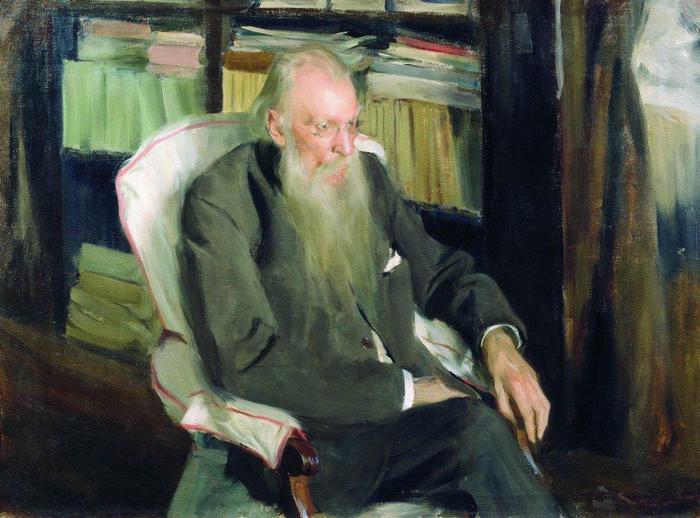
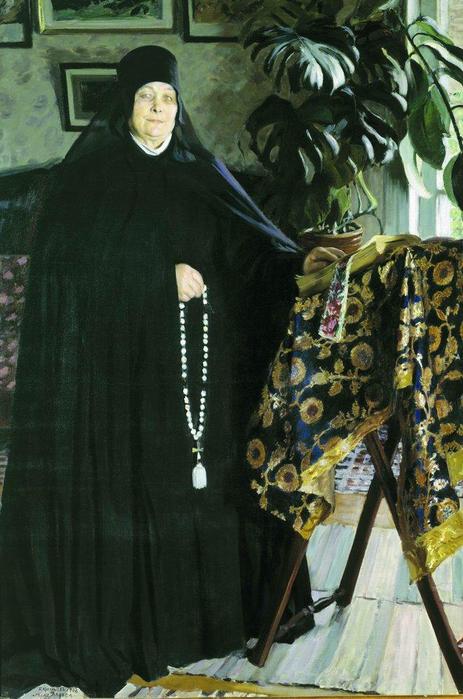
Nun. 1908
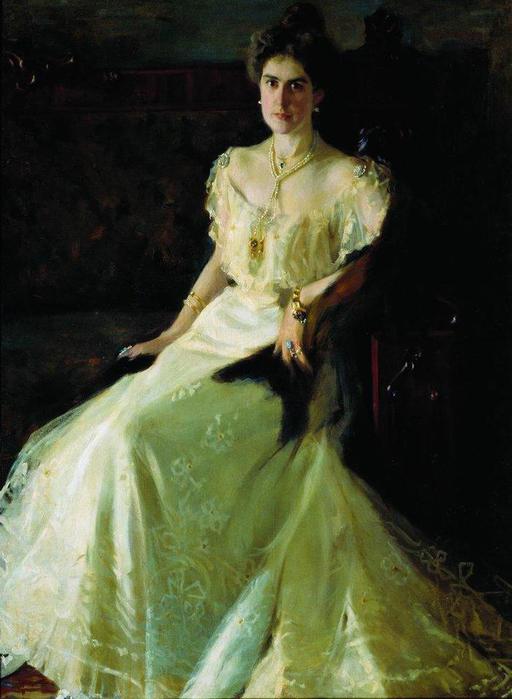
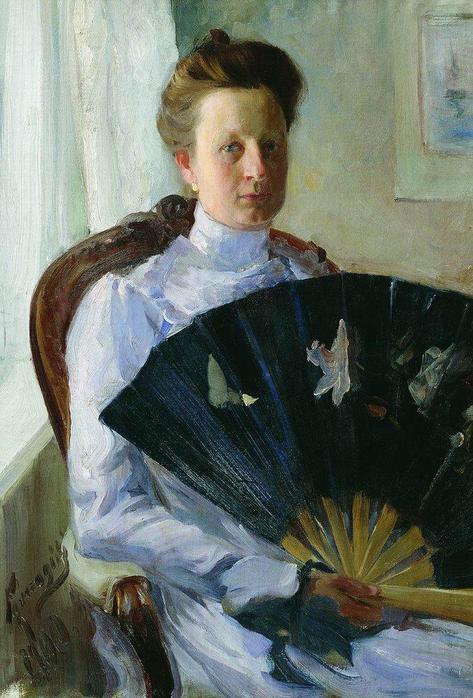


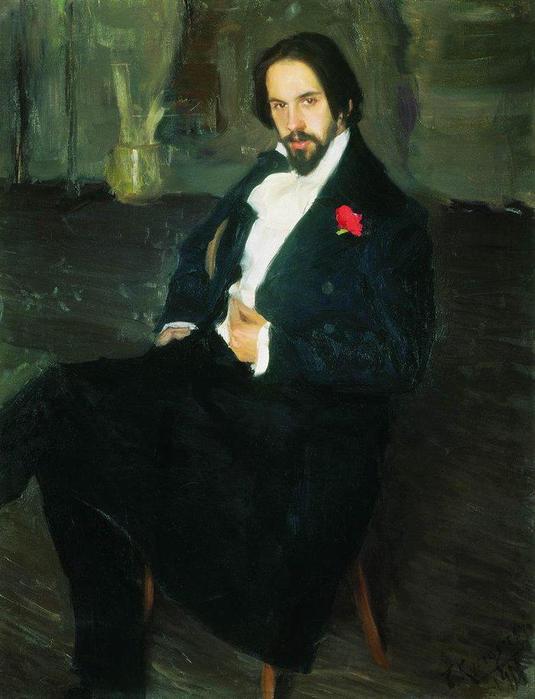
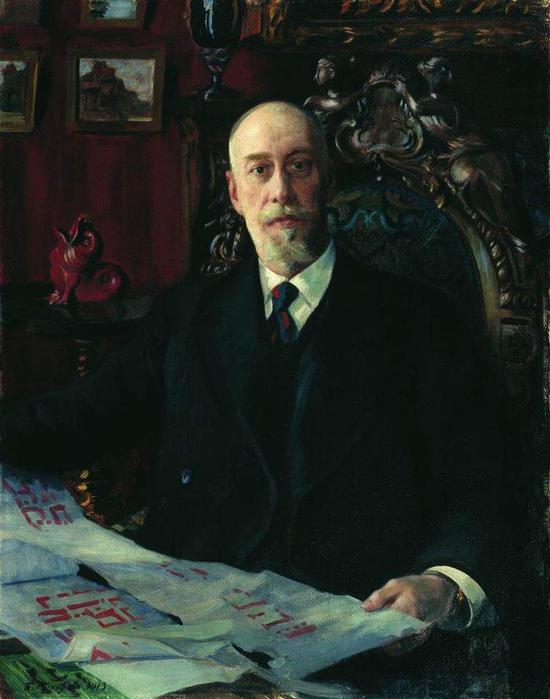
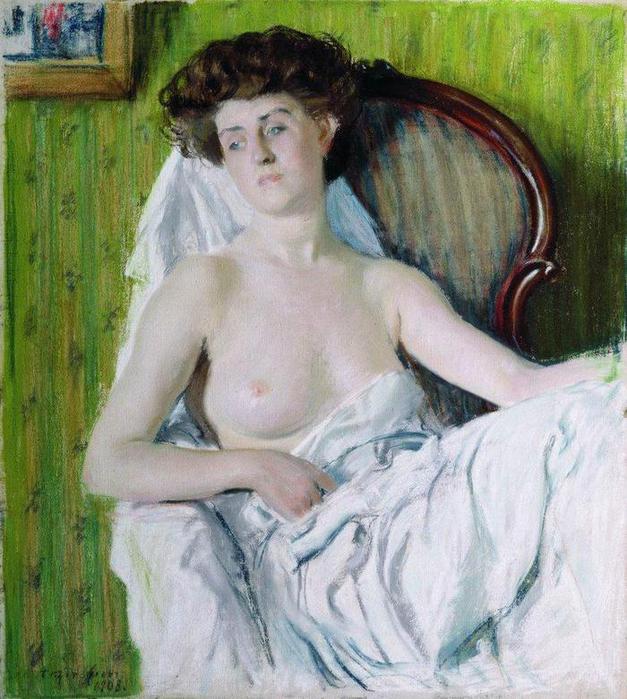

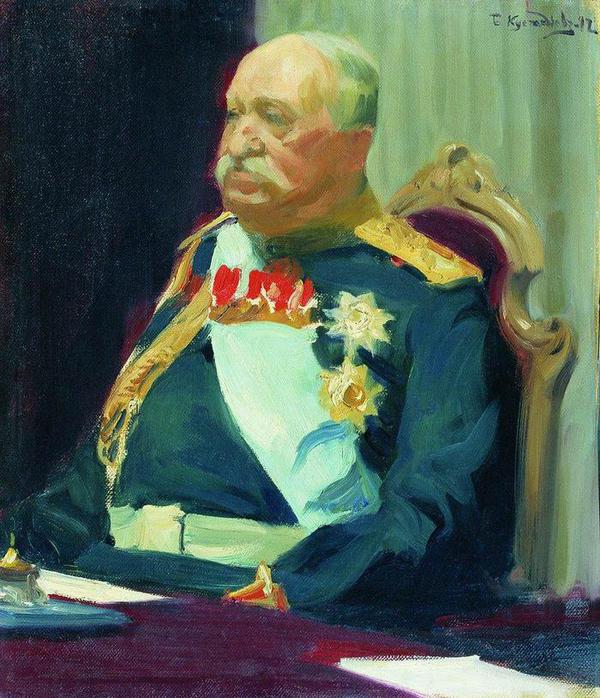
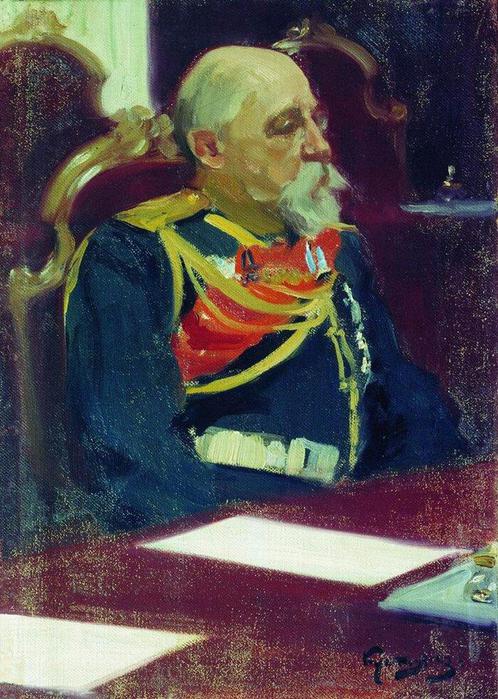
Portrait of the Governor General of Finland N.I. Bobrikov. 1902-1903
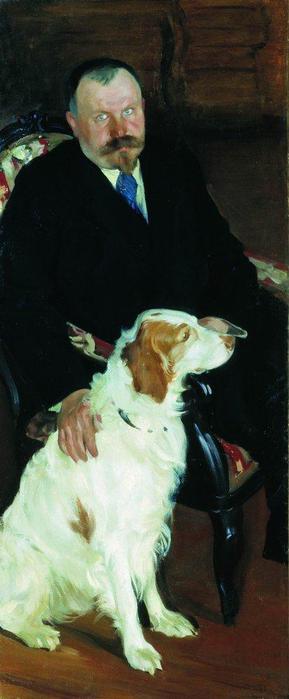

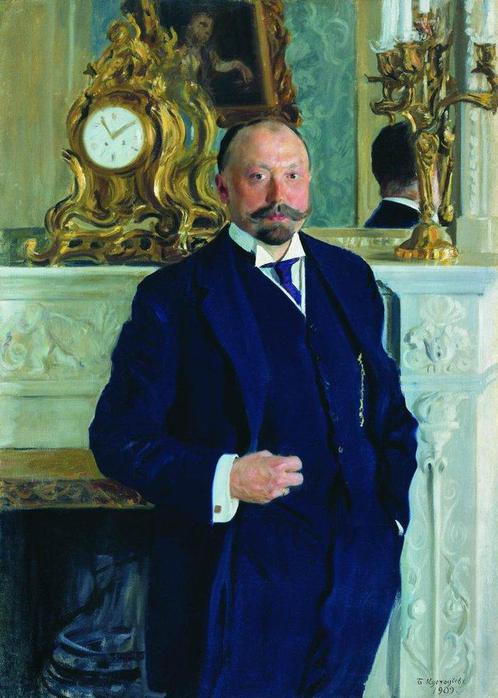
Portrait of P.L. Bark. 1909
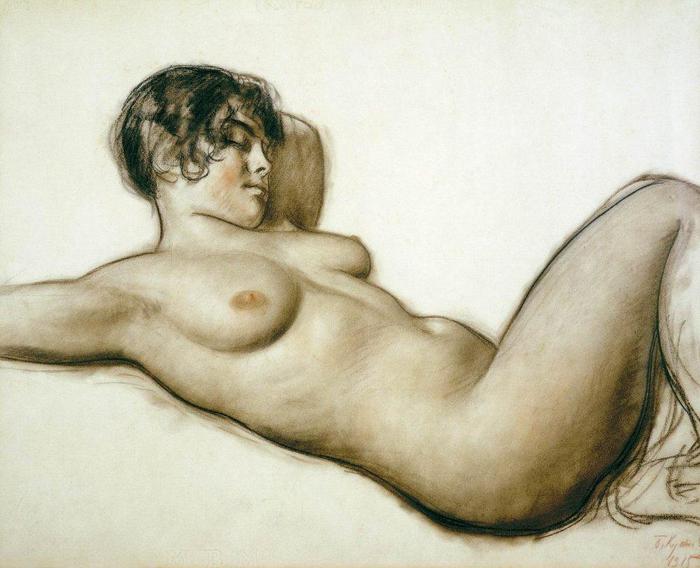
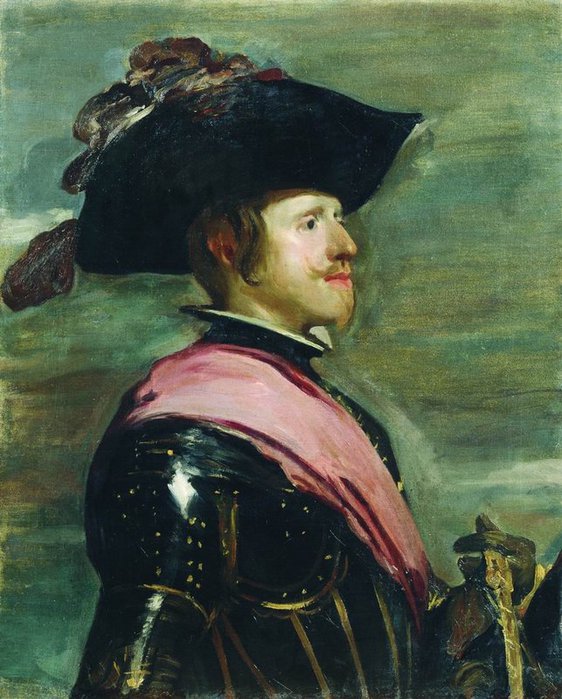
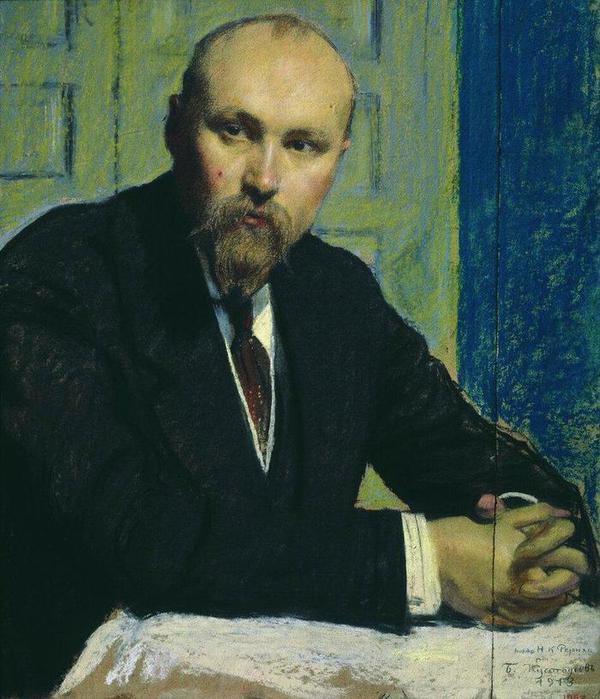




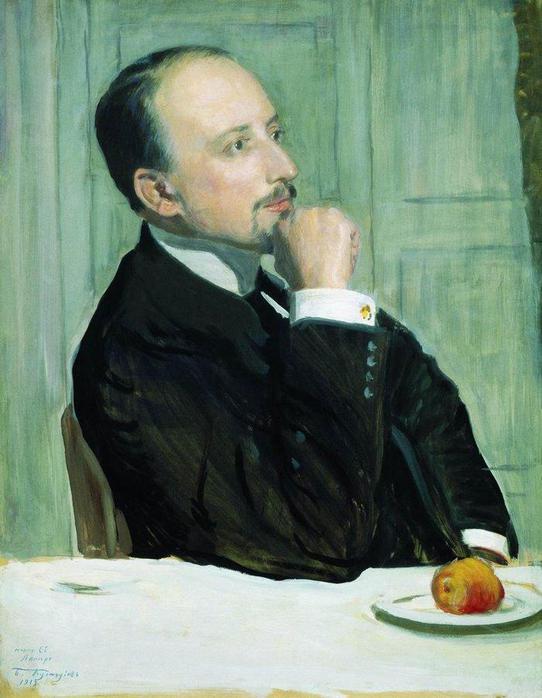



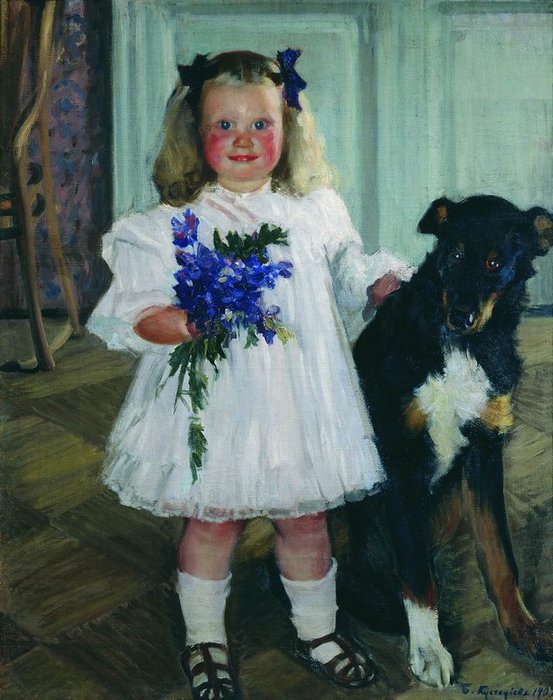
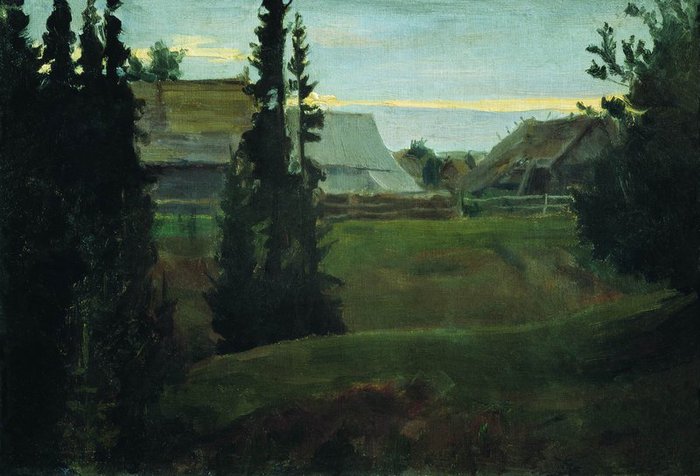


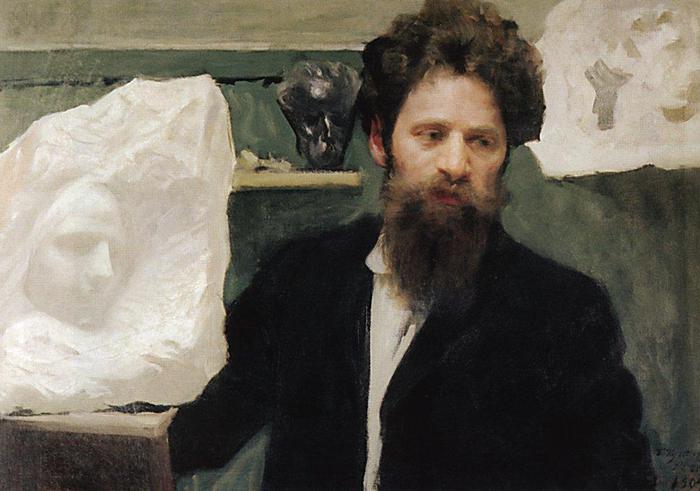


Portrait of Ya.I. Lavrin. 1909
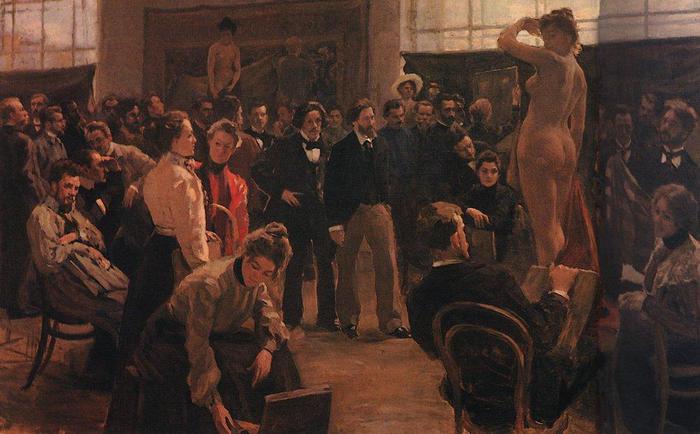

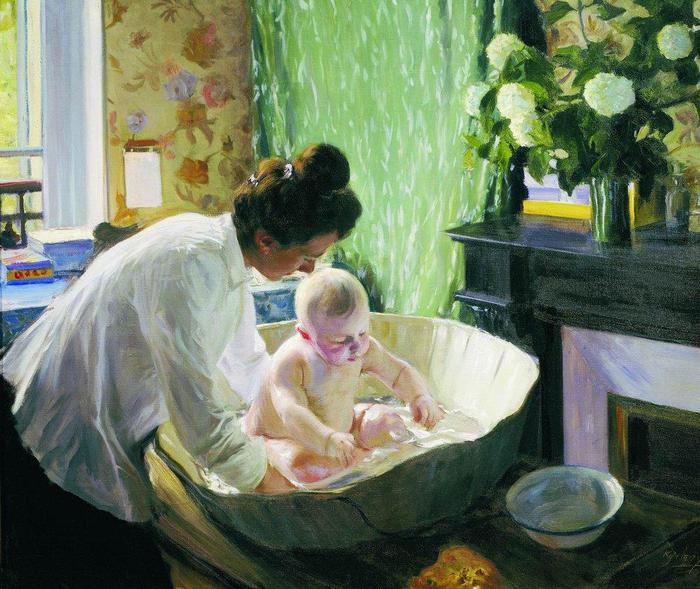

Boris Kustodiev was born on March 7, 1878 in Astrakhan.
In the fall of 1896, Kustodiev entered the school at the Academy of Arts in St. Petersburg. In those years, the fame of both Vasnetsov and Repin was already thundering. Repin drew attention to the talented young man and took him into his workshop. He did not like to talk about his work, but he talked with enthusiasm about his students. He especially singled out Kustodiev and called the young man “a hero of painting.”
According to I. Grabar, “Kustodiev’s portraits stood out against the background of dull academic exhibitions; as the master’s works, they were in the spotlight, the author was invited to all exhibitions, he became famous.” The Italian Ministry of Arts ordered him a self-portrait, which was placed in the hall of self-portraits of artists different eras and countries in the famous Florentine Uffizi Gallery.
Along with portraits, genre paintings by Kustodiev appeared at the exhibitions. One of the main themes is noisy, crowded fairs in his native Volga cities. Kustodiev’s paintings could be read as stories sparkling with humor. After all, his diploma work at the academy was not a composition on a historical or religious theme, as was customary, but “Bazaar in the Village,” for which he received a gold medal and the right to a pensioner’s trip abroad. Signs of an impending disaster that radically and mercilessly changed life of Kustodiev, appeared in 1909. Suddenly my hand started to hurt, and my fingers couldn’t even hold a light watercolor brush. Terrible headaches began. For several days I had to lie in a darkened room, wrapping my head in a scarf. Any sound increased the suffering. St. Petersburg doctors found he had bone tuberculosis and sent him to the mountains of Switzerland. Shackled from neck to waist in a rigid celluloid corset, torn from his easel and paints, he lay month after month, breathing the healing mountain air of the Alps. The artist later recalled these long months “with a warm feeling, with a feeling of delight at the creative impulse and burning spirit.” Even more surprising is that Kustodiev subsequently “translated” most of the conceived themes and plots onto canvas, into real paintings.
And the disease came. It turned out to be worse than expected: a spinal cord tumor. He underwent a series of difficult operations that lasted several hours. Before one of them, the professor said to his wife:
- The tumor is somewhere closer to the chest. You need to decide what to save, arms or legs?
- Hands, leave your hands! An artist without hands? He won't be able to live!
And the surgeon retained the mobility of his hands. Only hands. Until the end of life. From now on, his “living space” was narrowed to the four walls of a cramped workshop, and the entire world that he could observe was limited to the window frame.
But the more severe Kustodiev’s physical condition was, the more selflessly he worked. During the years of immobility, he created his best things.
The Kustodiev paintings of this period are relatively small in size, on average one meter per meter. But not because it was difficult with the canvas and paints (although this also happened). It’s just that the border of the painting had to be where the brush of the artist chained to the chair could reach.
Here is his “Moscow tavern”. Kustodiev once spied this scene in Moscow and said: “They smelled of something Novgorod, an icon, a fresco.” Old Believers cabbies drink tea fervently, as if saying a prayer, holding saucers on straightened fingers. The dark blue caftans, the thick beards of the men, the white canvas clothes of the floor guards, the dark red, like shimmering background of the walls and the mass of details extracted from memory accurately convey the atmosphere of a Moscow tavern... The son and friends who did not leave the artist posed as cab drivers. The son recalled how, having completed the work, Kustodiev joyfully exclaimed: “But, in my opinion, the picture came out! Well done to your father!” And this is truly one of his best works.
Fyodor Ivanovich Chaliapin decided to stage A. Serov’s opera “The Power of the Enemy” on the stage of the Mariinsky Theater. He really wanted Kustodiev to complete the sketches of the scenery and costumes, and he himself went to negotiations. I saw the artist in a cramped studio, which also served as a bedroom, in a wheelchair, reclining under an easel hanging over him (this is how he now had to work), and “pitying sadness” pierced the heart of the great singer. But only in the first few minutes. Chaliapin recalled: “He amazed me with his spiritual vigor. His cheerful eyes shone brilliantly - they contained the joy of life. With pleasure, he agreed to make scenery and costumes.
- In the meantime, pose for me in this fur coat. Your fur coat is so rich. It's a pleasure to write it..."
The portrait turned out to be huge - more than two meters in height. The majestic, lordly singer of Russia strides widely across the snow crust in a luxurious fur coat. In the picture there was a place for Chaliapin’s family, and even for his beloved dog. Chaliapin liked the portrait so much that he also took sketches for it. In order for Kustodiev to work on such a large painting, his engineer brother secured a block with a load under the ceiling. The canvas with the stretcher was suspended and it was possible to bring it closer, further away, or move it left and right. He painted the portrait in sections, without seeing the whole. Kustodiev said: “Sometimes I myself have a hard time believing that I painted this portrait, I worked so much at random and by touch.” But the calculation turned out to be amazing. The film, according to the unanimous opinion of critics, became one of best achievements Russian portrait art.
One of latest works Kustodieva - “Russian Venus”. Well, how can you believe that this radiant, beautifully drawn naked young woman was created at a time when the artist said: “I am tormented at night by the same nightmare: black cats dig into my back with sharp claws and tear my vertebrae...” And right hand began to weaken and dry out. There was no canvas for Venus. And he wrote it on the back of some of his old, considered unsuccessful, paintings. The family participated in the creation of the painting. Brother Michael adapted blocks and counterweights for the canvas. The daughter posed, as for many other paintings. Lacking a broom, she had to hold a ruler in her hands. The son whipped foam in a wooden tub so that the image of even this minor detail was close to reality. This is how this one of the most life-loving paintings was born.Before last days Kustodiev worked tirelessly throughout his life. He was busy sketching scenery for the puppet theater for the fairy tale “The Cat, the Fox and the Rooster.” On May 4, I submitted 24 (!) engravings for an exhibition at the State Russian Museum...
Sun. Voinov, a friend of the artist, the author of the first monograph about him, wrote in his diary: “May 15. Kustodiev's name day. He was very sick, but sat in his chair. Gorbunov came to see him.” And in the margin there is a note: “ Last time I saw Boris Mikhailovich in my life.” Gorbunov was the manager of the affairs of the Council in those years people's commissars THE USSR. He came to inform Kustodiev: the government had allocated money for his treatment abroad. Too late. Boris Mikhailovich Kustodiev died on May 26, 1927.
BIOGRAPHY
Born into a poor family, Boris Mikhailovich Kustodiev (1878-1927) was preparing to become a priest. He studied at a theological school, then at a seminary, but became interested in art, and in 1896, leaving the seminary, he went to St. Petersburg and entered the Academy of Arts (AH). There he studied in the workshop of Ilya Repin and was so successful that the director invited him to be his assistant to work on the painting “Meeting of the State Council.” Kustodiev discovered a gift for portrait painting, and while still a student, he completed a number of first-class portraits - Daniil Lukich Mordovtsev, Ivan Yakovlevich Bilibin (all 1901), Vasily Mate (1902). In 1903, Kustodiev graduated from the Academy of Arts, receiving a gold medal and the right to travel abroad for his diploma painting “Bazaar in a Village” - Kustodiev chose Paris. In Paris, the artist managed to take a closer look at French painting and make good use of his impressions in the beautiful painting “” (1904), but less than six months later he returned to Russia, missing his homeland.
After his return, Kustodiev very successfully tried his hand at book graphics, in particular by illustrating Nikolai Gogol’s “The Overcoat” (1905), as well as in caricature, collaborating in satirical magazines during the first Russian revolution. But the main thing for him still continued to be painting. He performed a number of portraits, among which “” (1909) stood out, as well as “” (1907) and “” (1908), which turned into generalized socio-psychological types. At the same time, he enthusiastically worked on paintings dedicated to depicting old Russian life, mainly provincial. He drew material for them from childhood memories and impressions from his frequent stays in the Volga region, in the Kineshma district, where in 1905 he built a house-workshop. He unfolded fascinating stories, full of entertaining details, in multi-figure compositions "" (1906, 1908), "Village Holiday" (1910) and recreated characteristic Russian female types in the paintings "Merchant's Wife", "Girl on the Volga", "" (all 1915 ), colored with admiration and the author's soft irony. His painting became more and more colorful, approaching folk art. The result was “” (1916) - an idyllic panorama of a holiday in a Russian provincial town. Kustodiev worked on this cheerful picture in extremely difficult conditions: as a result of a serious illness, he was confined to a wheelchair since 1916 and was tormented by frequent pain.
Despite this, last decade his life turned out to be unusually productive. He painted two large paintings depicting the holiday in honor of the opening of the Second Congress of the Communist International, performed many graphic and pictorial portraits, made sketches of the festive decorations of Petrograd, drawings and covers for books and magazines of various contents, made wall pictures and calendar “walls”, designed 11 theatrical performances. Often these were custom-made works that were not very interesting for him, but he carried out everything seriously professional level, and sometimes achieved outstanding results. Lithographic illustrations in the collection “Six Poems of Nekrasov” (1922), drawings for Nikolai Leskov’s stories “The Darner” (1922) and “Lady Macbeth” Mtsensk district"(1923) became the pride of Russian book graphics, and among the performances he designed, Yevgeny Zamyatin's The Flea, staged by the 2nd Moscow Art Theater in 1925 and immediately repeated by the Leningrad Bolshoi Drama Theater, shone.
Kustodiev managed to devote time to the innermost, continuing with nostalgic love to recreate the life of old Russia in a variety of paintings, watercolors, and drawings. He varied the themes of Maslenitsa in different ways in the paintings “” (1917), “” (1919), “Winter. Maslenitsa festivities" (1921) and even in his wonderful portrait of Fyodor Chaliapin he used the same festivities as the background. He depicted the quiet life of the province in “The Blue House”, “Autumn”, “Trinity Day” (all 1920). In the paintings "" (1918), "" (1920), "" (1925-26) he continued the gallery of female types begun in the long-standing "Merchant's Wife". He completed a series of 20 watercolors “Russian Types” (1920) and resurrected his own childhood with maximum authenticity in a number of paintings, as well as in the series “Autobiographical Drawings” (1923) - similar to sketches.
Kustodiev’s energy and love of life were amazing. He, in his wheelchair, attended premieres in theaters and even performed long trips around the country. The disease progressed, and in recent years the artist was forced to work on a canvas suspended above him almost horizontally and so close that he was unable to see the whole thing. But physical strength it was exhausted: an insignificant cold led to pneumonia, which the heart could no longer cope with. Kustodiev was not even fifty years old when he died.
A detailed chronology of Kustodiev’s life and work can be found in the section.
Boris Mikhailovich Kustodiev (February 23 (March 7) 1878, Astrakhan - May 26, 1927, Leningrad) - Russian artist.
Biography of Boris Kustodiev
Boris Mikhailovich Kustodiev, originally from the family of a gymnasium teacher, began studying painting in Astrakhan with P. A. Vlasov in 1893-1896.
Born in 1878. Took drawing lessons from P.A. Vlasov, who graduated from the Moscow School of Painting.
After a two-year stay in the general classes of the Academy of Arts, he entered the workshop of I.E. Repin, whom he helped in painting “Meeting of the State Council” (Kustodiev painted the entire right side of the picture, with sketches for it).
Received a business trip abroad for the film “Village Fair”.
He exhibited his works successively at the “Spring Exhibitions” at the Academy of Arts, at exhibitions of the “New Society”, at exhibitions of the “Union”, at the “Salon”, and since 1910 at exhibitions of the “World of Art”, abroad - in Paris, Vienna , Munich, Budapest, Brussels, Rome, Venice, Malmo and other cities.
Kustodiev's creativity
Kustodiev began his career as a portrait artist. Already while working on sketches for Repin’s “Great Meeting of the State Council on May 7, 1901,” student Kustodiev showed his talent as a portrait painter. In sketches and portrait sketches for this multi-figure composition, he coped with the task of achieving similarities with Repin’s creative style. But Kustodiev the portrait painter was closer to Serov.
Already from the beginning of the 1900s, Boris Mikhailovich was developing a unique genre of portrait, or rather, portrait-picture, portrait-type, in which the model is linked together with the surrounding landscape or interior.
At the same time, this is a generalized image of a person and his unique individuality, revealing it through the world surrounding the model. In their form, these portraits are related to the genre images-types of Kustodiev (“Self-portrait” (1912), portraits of A. I. Anisimov (1915), F. I. Chaliapin (1922)).
Subsequently, Kustodiev gradually shifted more and more towards an ironic stylization of folk and, especially, the life of the Russian merchants with a riot of colors and flesh (“Beauty”, “Russian Venus”, “Merchant’s Wife at Tea”).
Like many artists of the turn of the century, Kustodiev also worked in the theater, transferring his vision of the work to the theater stage.
The scenery performed by Kustodiev was colorful, close to his genre painting, but this was not always perceived as an advantage: creating a bright and convincing world, carried away by its material beauty, the artist sometimes did not coincide with the author’s plan and the director’s reading of the play (“The Death of Pazukhin” by Saltykov- Shchedrin, 1914, Moscow Art Theater; “The Thunderstorm” by Ostrovsky, which never saw the light of day, 1918).
In his later works for the theater, he moves away from a chamber interpretation to a more generalized one, seeks greater simplicity, builds the stage space, giving freedom to the director when constructing mise-en-scenes.
Kustodiev's success was his design work in 1918-20. opera performances (1920, “The Tsar’s Bride”, Bolshoi Opera House People's House; 1918, “Snow Maiden”, Grand Theatre(staging not carried out)). Scenery sketches, costumes and props for A. Serov’s opera “The Power of the Enemy” (Academic (former Mariinsky) Theatre, 1921).
Kustodiev, Boris Mikhailovich
| Boris Mikhailovich Kustodiev | |
Self-Portrait (1912). Uffizi Gallery |
|
| Date of Birth: |
February 23 (March 7) ( 1878-03-07 ) |
|---|---|
| Place of Birth: | |
| Date of death: | |
| Works on Wikimedia Commons | |
Boris Mikhailovich Kustodiev(February 23 (March 7), Astrakhan - May 26, Leningrad) - Russian artist.
Boris Mikhailovich Kustodiev, originally from the family of a gymnasium teacher, began studying painting in Astrakhan with P. A. Vlasov in 1893-1896.
Biography
His father died when the future artist was not even two years old. Boris studied at a parish school, then at a gymnasium. From the age of 15 he took drawing lessons from a graduate of the St. Petersburg Academy of Arts P. Vlasov.
- - taught at the New Art Workshop (St. Petersburg).
- - Member of the Association of Artists of Revolutionary Russia.
Addresses in St. Petersburg - Petrograd - Leningrad
- 1914 - apartment building - Ekateringofsky Avenue, 105;
- 1915 - 05/26/1927 - apartment building of E.P. Mikhailov - Vvedenskaya street, 7, apt. 50.
Illustrations and book graphics
In 1905-1907 he worked in the satirical magazines “Bug” (the famous drawing “Introduction. Moscow”), “Hell Mail” and “Sparks”.
With a keen sense of line, Kustodiev performed cycles of illustrations for classical works and for the creations of his contemporaries (illustrations for Leskov’s works “The Darner”, 1922, “Lady Macbeth of Mtsensk”, 1923).
Possessing a strong touch, he worked in the technique of lithography and engraving on linoleum.
Painting
Kustodiev began his career as a portrait artist. Already while working on sketches for Repin’s “Great Meeting of the State Council on May 7, 1901,” student Kustodiev showed his talent as a portrait painter. In sketches and portrait sketches for this multi-figure composition, he coped with the task of achieving similarities with Repin’s creative style. But Kustodiev the portrait painter was closer to Serov. Painterly plasticity, free long stroke, bright characteristic appearance, emphasis on the artistry of the model - these were mostly portraits of fellow students and teachers of the Academy - but without Serov's psychologism. Kustodiev incredibly quickly for a young artist, but deservedly won fame as a portrait painter among the press and customers. However, according to A. Benoit:
“... the real Kustodiev is a Russian fair, motley, “big-eyed” calicoes, a barbaric “fight of colors”, a Russian suburb and a Russian village, with their accordions, gingerbread, dressed up girls and dashing guys... I claim that this is his real sphere, his real joy... When he writes fashionable ladies and respectable citizens, it is completely different - boring, sluggish, often even tasteless. And it seems to me that it’s not the plot, but the approach to it.”
Already from the beginning of the 1900s, Boris Mikhailovich was developing a unique genre of portrait, or rather, portrait-picture, portrait-type, in which the model is linked together with the surrounding landscape or interior. At the same time, this is a generalized image of a person and his unique individuality, revealing it through the world surrounding the model. In their form, these portraits are related to the genre images-types of Kustodiev (“Self-portrait” (1912), portraits of A. I. Anisimov (1915), F. I. Chaliapin (1922)).
But Kustodiev’s interests went beyond the portrait: it was no coincidence that he chose for his thesis genre painting (“At the Bazaar” (1903), not preserved). In the early 1900s, for several years in a row he went to perform field work in the Kostroma province. In 1906, Kustodiev presented works that were new in their concept - a series of canvases on the themes of brightly festive peasant and provincial petty-bourgeois-merchant life (“Balagany”, “Maslenitsa”), in which the features of Art Nouveau are visible. The works are spectacular and decorative, revealing the Russian character through the everyday genre. On a deeply realistic basis, Kustodiev created a poetic dream, a fairy tale about provincial Russian life. Great importance in these works, a line, a pattern, a spot of color are given, the forms are generalized and simplified - the artist turns to gouache, tempera. The artist's works are characterized by stylization - he studies Russian parsuna of the 16th-18th centuries, lubok, signs of provincial shops and taverns, and folk crafts.
Subsequently, Kustodiev gradually shifted more and more towards an ironic stylization of folk and, especially, the life of the Russian merchants with a riot of colors and flesh (“Beauty”, “Merchant’s Wife at Tea”).
Theater works
Like many artists of the turn of the century, Kustodiev also worked in the theater, transferring his vision of the work to the theater stage. The scenery performed by Kustodiev was colorful, close to his genre painting, but this was not always perceived as an advantage: creating a bright and convincing world, carried away by its material beauty, the artist sometimes did not coincide with the author’s plan and the director’s reading of the play (“The Death of Pazukhin” by Saltykov- Shchedrin, 1914, Moscow Art Theater; “The Thunderstorm” by Ostrovsky, which never saw the light of day, 1918). In his later works for the theater, he moves away from a chamber interpretation to a more generalized one, seeks greater simplicity, builds the stage space, giving freedom to the director when constructing mise-en-scenes. Kustodiev's success was his design work in 1918-20. opera performances (1920, The Tsar's Bride, Bolshoi Opera Theater of the People's House; 1918, The Snow Maiden, Bolshoi Theater (not staged)).
The productions of Zamyatin’s “The Flea” (1925, Moscow Art Theater 2nd; 1926, Leningrad Bolshoi Drama Theater) were successful. According to the memoirs of the director of the play A.D. Dikiy:
“It was so vivid, so precise that my role as a director accepting sketches was reduced to zero - I had nothing to correct or reject. It was as if he, Kustodiev, had been in my heart, overheard my thoughts, read Leskov’s story with the same eyes as me, and equally saw it in stage form. ... I have never had such complete, such inspiring like-mindedness with an artist as when working on the play “The Flea.” I learned the full meaning of this community when Kustodiev’s farcical, bright decorations appeared on the stage, and props and props made according to his sketches appeared. The artist led the entire performance, taking, as it were, the first part in the orchestra, which obediently and sensitively sounded in unison.”
